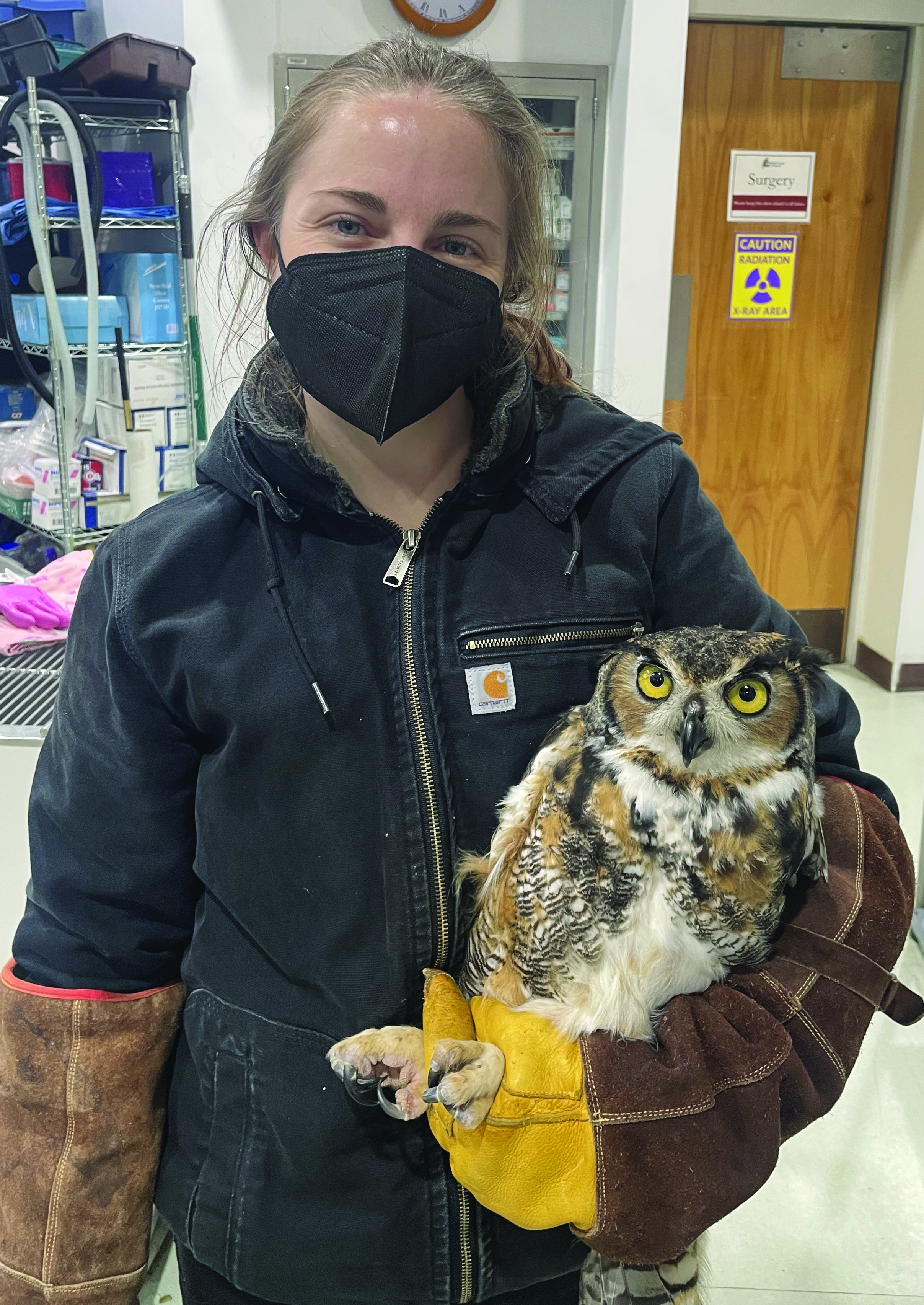By Page H. Gifford
Correspondent
There are many questions people have when it comes to encountering or understanding wildlife. With increased development in many areas, wildlife habitats have shrunk and the probability of coming into contact with wildlife is now more likely. Therefore, the Lake Monticello Wildlife Committee has teamed up with the Wildlife Center of Virginia to share tips and information with area residents about wildlife.

The Wildlife Center of Virginia is a non-profit hospital for native wildlife, located in Waynesboro. Each year, the Center treats thousands of injured, sick, and orphaned animals from across Virginia. The Center admitted a record-setting 4,041 patients in 2023.
“At the Wildlife Center, we treat to release – we work to restore an animal to health so that it may live, and thrive, back out in the wild. The average time a patient stays at the Center is a little over a week,” said Michael Adkins, who oversees the Center’s emergency helpline. “But for some, the stay can be much longer.”
One of those patients was a Great Horned Owl who was released on Jan. 10, after he had been recovering at the Center for almost two years.
The owl came to the Center back on February 6, 2022, after it had been hit by a car in Albemarle County. The rescuer found the bird dazed in the middle of the road, and a Center transport volunteer brought it in for an examination,” said Connor Gillespie, the center’s outreach supervisor.
The Center’s treatment team discovered during the initial exam that the owl had multiple injuries, including eye trauma, a wound on the owl’s cere (the soft tissue surrounding a bird’s beak), and damage to its feathers. The team started the bird on a combination of antibiotic and anti-inflammatory medications.
Luckily, the owl’s eyes and cere healed well after several months of treatment – no permanent damage had been done,” said Gillespie. “But the feather damage was more challenging and took far longer to treat. The damage to the owl’s feathers not only impacted the bird’s ability to fly but also prevented it from flying silently.” Unlike other birds, owls are equipped with feathers and wings that are structured so that their flight is almost completely silent, an adaptation that helps it hunt and catch its prey. Without silent flight, the owl would not have been able to survive in the wild. Based on the injuries, the veterinary team would have had to make the difficult decision to humanely euthanize it.
Gillespie said the staff at the Center did everything they could to help the bird recover: providing daily meals, dietary supplements, and weekly feather checks to ensure the bird was staying healthy. They even tried “imping,” a delicate procedure that involves transplanting healthy donor feathers onto the owl.
Ultimately, that transplant technique was unsuccessful. The only option left was to wait for the owl to molt and slowly regrow healthy feathers on its own, something a Great Horned Owl does only once a year.
“That feather-recovery process took 703 days. After nearly 23 months of care, the owl had finally developed a full plumage of healthy feathers,” he said.
A flight test revealed that the owl could again fly silently and was ready for release. “It was an amazing moment,” recounted rehab team lead McKenzie Stewart. “We had been caring for this bird for so long, and we were just so happy to know it could finally go back home.”
Transporter Miette Michie, the volunteer who had originally brought the bird to the Center back in February 2022, picked the bird up from the Center and released it in an owl-friendly habitat in Crozet. “He flew up into a tree in the woods,” Miette reported, “and a few minutes later flew off deeper into the woods to another tree. A Beautiful sight.”
A wonderful moment for staff and volunteers to see him free and flying where he belonged and a great ending for one of the Center’s longest-tenured patients.
To learn more about the Wildlife Center of Virginia, including upcoming events and how to support their work, visit wildlifecenter.org.




